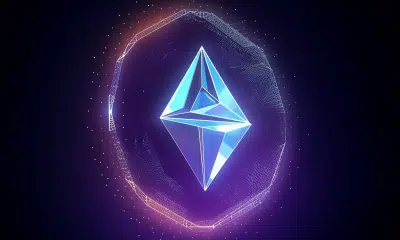Ethereum Muir Glacier hard fork update receives 88.6% client approval

The Ethereum mainnet has finally undergone the Muir Glacier hard fork. The update was activated at Block number 9,200,000 on 2 January 2020. At the time of writing, major cryptocurrency exchanges like Binance, Kraken, Bittrex, and Bitso were ready to support the upgrade, while exchanges like Coinbase, Bithumb, Huobi, Poloniex, Gemini and Bitfinex had not taken a clear stand on the hard fork yet.
This community dedicated hard fork had only one improvement proposal, EIP 2384, one which basically aims to delay the ‘Difficulty bomb‘, which is also referred to as Ethereum’s Ice Age. The update aims to delay the difficulty bomb for at least another 4,000,000 blocks, that is, 611 days, approximately.

Source : ethernodes.org/muir_glacier
According to the attached Muir Glacier ready client graph, 88.6% of the clients were ready, while 11.4% were not ready. Additionally, at the time of writing, as per ethernodes, clients Geth, parity Ethereum, Infura, and Etherscan were running in sync with the update, while Nethermind showed no signs of it.
The Ethereum Cat Herders in a blog post explained that the Muir Glacier upgrade was a necessary one following the Dec. 7 Istanbul upgrade as it caused problems with respect to predicting the timing of the difficulty bomb. The blog post read,
“The timing of when the difficulty bomb begins to kick-in is difficult to estimate. While planning Istanbul, it was first estimated that the bomb would not be noticeable until mid-2020. This implied that it could safely be delayed in the follow-up upgrade to Istanbul. However, those estimates were wrong.”
Elaborating on Ethereum’s difficulty bomb, it is a mechanism that complicates the process of generating new blocks over time and eventually leads the network towards a proof-of-stake(PoS) consensus algorithm.
Crypto-exchange Binance supported the Muir Glacier upgrade through a blog post. On 16 December, Binance had also announced a similar action to support a 2.0.2 network upgrade of Algorand, a blockchain network developed by the eponymous American blockchain firm.
Some developers also raised concerns that asked for the removal of this algorithm completely. However, given the short time frame, the developer team eventually decided to move forward with another delay. SparkPool took the lead and became the first one to mine the Muir Glacier fork block. Vitalik Buterin, Co-founder of Ethereum, was soon congratulating Sparkpool about the same.
Congrats @sparkpool_eth once again for inaugurating Muir Glacier!
— vitalik.eth (@VitalikButerin) January 2, 2020
Previously, at the Ethereum Core Devs meeting last month, the hard fork coordinator James Hancock had stated that there was a “rough consensus” on pushing the difficulty bomb. He tweeted,
We thought we had months until it kicked in, but those numbers were wrong. The Ice Age is already being felt!
There is now a proposal for a single-EIP upgrade after Istanbul to push it back: EIP-2387 a.k.a. Mountain Glacier?
We'll see on the call if & how it goes through!
— Tim Beiko | timbeiko.eth (@TimBeiko) November 29, 2019






